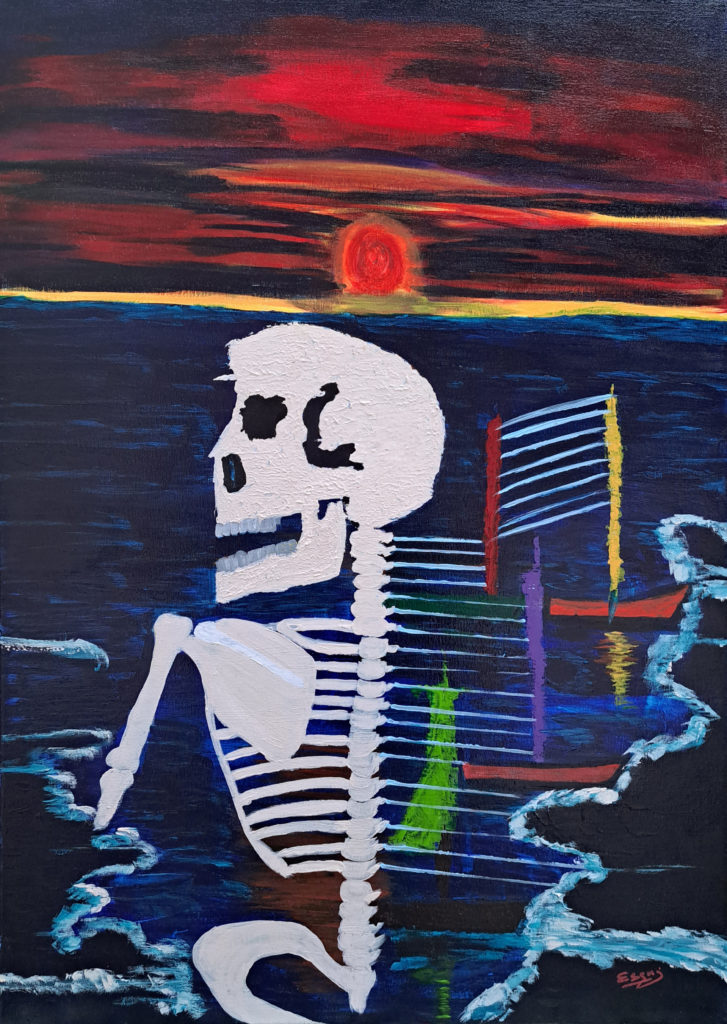Analysis of the painting "The View" by artist ESENJ

In this spellbinding painting, entitled “The View”, the artist plunges us into a scene that is both poetic and enigmatic. At the center of the composition sits a white skeleton, in profile, contemplating the left side of the canvas. His fixed gaze seems to turn to the distant past, perhaps to what he has left behind.
At the very top, a sunset illuminates the sky in shades of orange, yellow, dark purple... This celestial vision seems to symbolize the farewell to a fading day and the welcome of a new adventure.
In the background, a slightly choppy, midnight-blue sea takes shape. The waves, in symphony with the movement of the colored sailboats on the right, depict a journey that is about to begin. These sailboats seem to represent freedom and escape into the unknown.
However, the most intriguing part of the painting lies in the skeleton’s backbone. On the right side, part of the spine seems to have disappeared, giving way to delicate white filaments that connect to the sailboats. This metaphor evokes the idea that, despite our divergent paths, we always remain linked to our past, to our roots.
The skeleton looks to the left, suggesting a gaze turned towards the earth, towards what has been left behind. Leaving for new adventures is not without melancholy, and distancing oneself from the past can be fraught with complex emotions.
"The View" takes us to the moment of departure. Sometimes, life forces us to leave places dear to our hearts, people we love. It's not a choice, but rather a painful and inevitable farewell. This separation is akin to heartbreak. Giving up everything we hold dear is not an easy act; it leaves deep imprints on our mental well-being. We take with us a single piece of luggage, loaded with memories, a treasure that is all we have left. As we move further away from the starting point, the fear grows that we will lose this precious treasure over time.
AKR
